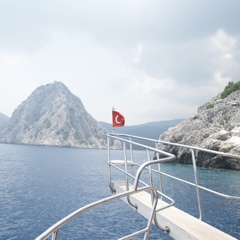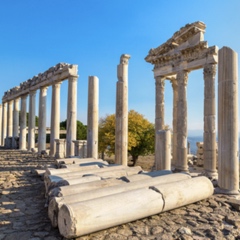In the 2nd century BC, following the era of Alexander the Great, Anatolia was a land of several independent kingdoms. Some of them had direct dealings with the Roman republic, and relations were not always good.
Roman legions poured into Anatolia to do battle with King Antiochus III of Seleucia. They defeated him at Magnesia (Manisa, near Izmir) in 190 BC, and left the government of Anatolia in the hands of the now-powerful kings of Pergamum (or Pergamon, modern Bergama).
The last king of Pergamum’s royal line died in 133 BC without an heir, and bequeathed his kingdom to Rome. In 129 BC the Roman republic claimed Anatolia as its own, establishing the province of Asia (or Asia Minor), with its capital at Ephesus.
Roman rule brought increased commerce and prosperity to Anatolia, and provided fertile ground for the spread of a new religion. Paul of Tarsus (a town west of Adana on Turkey’s Mediterranean coast) became the most active and greatest of proselytizers for Christianity. His journeys in his Anatolian homeland were crucial to the foundation of the Christian church.
Paul took several trips throughout the country on the excellent Roman roads, preaching to the prosperous Jewish communities, which spawned churches for the new faith.
Roman rule continued after the Roman republic became the Roman empire. In 333 AD a small fishing town on the Bosphorus, selected by Emperor Constantine the Great to become the new imperial capital, was inaugurated as Constantinople (later Istanbul).
After the sack of Rome in 410 AD by Visigoths, the empire lived on in Constantinople and the East. Historians usually call this later Roman empire the Byzantine Empire.












